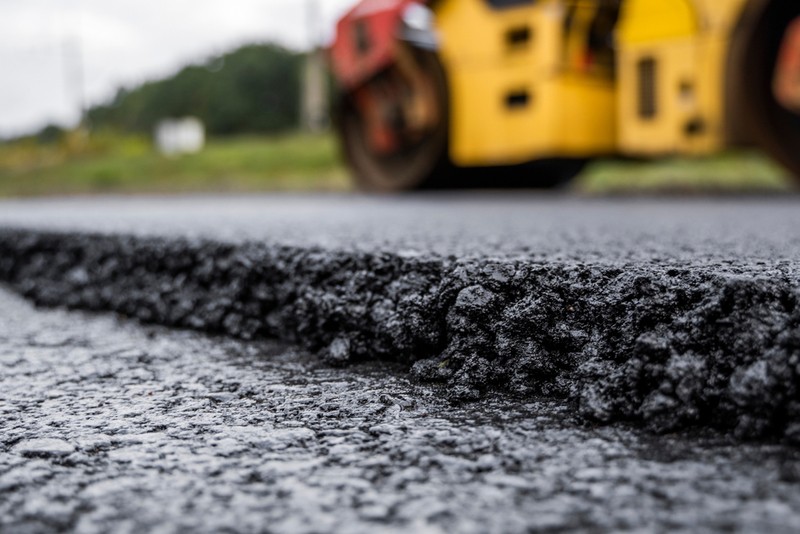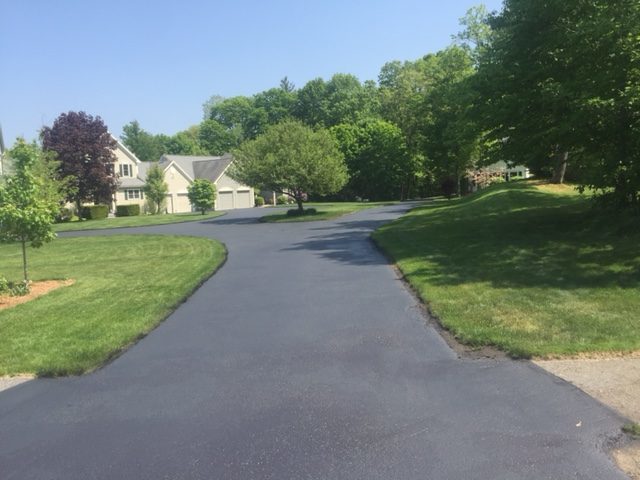Warm Mix Asphalt: A Lasting Solution for Pavement
Warm Mix Asphalt (HMA) has arised as a leading lasting option for sidewalk remedies, using a myriad of environmental benefits and cutting-edge innovations. As the need for environment-friendly building techniques expands, checking out the subtleties of HMA's sustainability can supply useful insights right into the future of sidewalk solutions.
Ecological Benefits of Hot Mix Asphalt

Additionally, Warm Mix Asphalt helps to minimize urban warmth island effects. Its dark shade soaks up sunlight, decreasing the quantity of heat showed back into the environment contrasted to lighter-colored pavements. This can reduce ambient temperature levels in metropolitan locations, reducing the demand for a/c and eventually minimizing power intake.
Additionally, Warm Mix Asphalt contributes to enhanced stormwater management. Its permeable nature permits water to charge and penetrate the sidewalk groundwater products, reducing overflow and the danger of flooding. These environmental advantages make Warm Mix Asphalt a sustainable selection for paving highways and roadways.
Power Efficiency in HMA Production
Is power efficiency an important consider the production of Hot Mix Asphalt (HMA)? Definitely. Power plays a considerable role in the production of HMA, affecting both price and ecological sustainability. One key aspect of energy effectiveness in HMA production is using warm mix asphalt (WMA) modern technologies (angled parking). WMA allows for the mixing and positioning of asphalt at lower temperatures compared to typical warm mix asphalt, causing reduced power consumption throughout production. This procedure not only reduces gas use but also reduces greenhouse gas discharges, making it a more eco-friendly choice.
Furthermore, improvements in plant technologies have actually led to more energy-efficient HMA manufacturing processes. By optimizing power use in HMA production, the market can minimize its carbon impact while maintaining top notch sidewalk materials.
Recyclability of Hot Mix Asphalt
The recyclability of Hot Mix Asphalt (HMA) is a crucial aspect of its sustainability and long-lasting ecological influence. HMA is one of the most recycled materials in the United States, with over 100 million lots of reclaimed asphalt pavement (RAP) being reused every year in brand-new sidewalk construction. Recycling HMA provides a number of ecological advantages, such as lowering the need for virgin materials, decreasing power intake throughout production, and decreasing the amount of waste sent to garbage dumps.
The process of recycling HMA entails milling the existing pavement, squashing it right into smaller items, and mixing it with brand-new accumulation and asphalt binder to produce a recycled mix. In general, the recyclability of HMA plays a substantial function in advertising sustainable methods within the pavement market.

Long-Term Performance of HMA
Asphalt sidewalks demonstrate longevity and durability over an extensive duration, mirroring the lasting efficiency of Warm Mix Asphalt (HMA) The long life of HMA can be connected to its capacity to hold up against rush hour lots, rough climate condition, and the results of aging. Researches have actually revealed that properly designed and appropriately built HMA pavements can last for two decades or more with regular maintenance. The key to making best use of the long-term performance of HMA lies in using original site premium materials, adhering to best techniques in building and construction, and implementing efficient maintenance approaches. Correct drain, routine inspections, and prompt repair work are vital for preserving the architectural stability of HMA pavements with time. Furthermore, advancements in HMA modern technology, such as using polymer-modified binders and warm mix asphalt, have actually additionally enhanced the durability and long life of HMA pavements. By focusing on quality building and construction and maintenance techniques, HMA remains to prove itself as a cost-efficient and lasting solution for resilient pavement facilities.

HMA: Durability and Sustainability
Demonstrating both resilience and sustainability, Hot Mix Asphalt (HMA) has actually become a cornerstone in the building and construction of lasting sidewalk facilities - regrading. HMA's durability stems from its capacity to stand up to heavy loads, extreme weather, and high web traffic quantities, making it a reliable selection for roads, highways, and airport runways. The composition of HMA, which normally includes accumulations, binder, and filler, plays an essential duty in enhancing its durability and resistance to tear and wear
Furthermore, HMA's sustainability hinges on its recyclability and energy-efficient manufacturing process. The capability to recycle redeemed asphalt pavement (RAP) in new HMA blends lowers the demand for virgin materials and lessens the ecological influence of pavement building and construction and maintenance. Furthermore, the power efficiency of generating HMA lies in its reduced blending temperature levels compared to other pavement products, bring about decreased power intake and greenhouse gas emissions.
Verdict
In conclusion, hot mix asphalt (HMA) provides a lasting option for sidewalk with its eco pleasant features. HMA's recyclability, energy efficiency in production, and lasting longevity make it an environmentally friendly choice for road building and construction.
HMA is one of the most recycled materials in the United Continue States, with over 100 million lots of recovered asphalt pavement (RAP) being reused yearly in brand-new sidewalk construction.The process of recycling HMA involves grating the existing pavement, crushing it into smaller sized items, and blending it with new accumulation and asphalt binder to develop a recycled mix.Asphalt sidewalks demonstrate durability and strength over a prolonged period, showing the published here long-term performance of Warm Mix Asphalt (HMA) Furthermore, developments in HMA innovation, such as the use of polymer-modified binders and warm mix asphalt, have further enhanced the sturdiness and long life of HMA pavements. The capacity to reuse redeemed asphalt sidewalk (RAP) in new HMA mixes lowers the demand for virgin materials and minimizes the environmental impact of pavement building and upkeep.